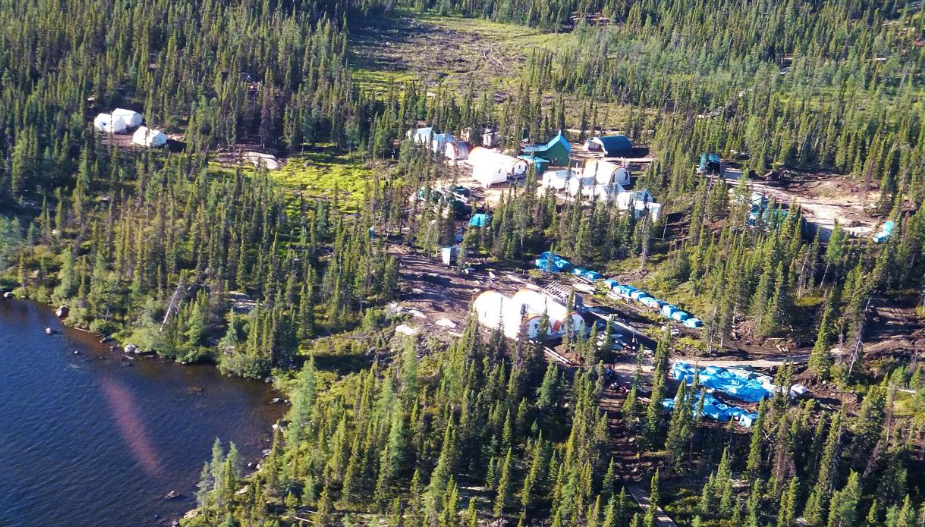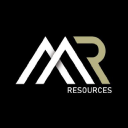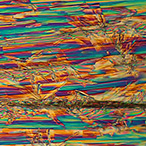Mont Royal Resources Bringing North America's Largest Undeveloped Rare Earth Deposit to ASX Imminently

Mont Royal (ASX:MRZ) lists with North America's largest undeveloped rare earth deposit. Proven metallurgy, experienced CEO, $25M EV for 200Mt resource. Canada backs infrastructure.
- Mont Royal Resources is merging with Commerce Resources to create a rare earth development company focused on the Ashram deposit in Quebec, Canada, with ASX listing imminent
- The Ashram project contains nearly 200 million tons of resource at approximately 2% total rare earth oxide (TREO) grade, making it the largest undeveloped rare earth deposit in North America
- Newly appointed CEO Nicholas Holthouse brings 36 years of experience in senior corporate, operational and project management roles and eight years of rare earth experience and will relocate to Montreal to oversee development
- The merged entity will have approximately 190 million shares at 20 cents Australian per share with $10 million cash, creating a market cap of ~$36 million and enterprise value of $25 million
- Key near-term focus is securing government support for road infrastructure to connect the remote deposit to markets, leveraging Canada's commitment of 1.5% GDP to critical mineral projects and associated infrastructure, as well as completing the updated PEA for the Ashram
As Western governments increasingly recognise the strategic importance of securing domestic critical mineral supply chains, Mont Royal Resources (ASX:MRZ) is preparing to list on the Australian Securities Exchange with an interesting rare earth development story. The company's merger with Commerce Resources brings together the Ashram deposit, North America's largest undeveloped rare earth resource with experienced management and a development-focused strategy aimed at capitalising on unprecedented government support for critical minerals. With expected ASX listing on 5th November 2025, the company enters the market at a time when rare earth projects are attracting significant investor and government attention.
The Genesis and Structure of the Merger
Mont Royal Resources was established by Peter Ruse and mining industry veteran Michael O'Keeffe, who is better known for his involvement with Riversdale Mining and his current board position as executive chairman at Champion Iron, which operates in Quebec. The company was originally floated on the ASX in 2019 as a vehicle to capitalise on merger and acquisition opportunities in Quebec. As Ruse explains:
"The genesis of Mont Royal really was it was set up as a vehicle to take advantage of picking up projects really with a focus on Quebec."
The merger with Commerce Resources has been in development for 18 months, brought together by common directors who recognised the strategic fit between Mont Royal's "tightly held, well-structured, low-cost-based listed ASX entity" and Commerce Resources' ambitions to access Australian capital markets. The transaction utilises a Canadian plan of arrangement to combine the companies while raising capital and establishing a primary listing on the ASX with a secondary listing on the TSX Venture Exchange.
The merged entity will comprise approximately 190 million shares at an issue price of 20 cents Australian per share, with around $10 million Australian dollars in cash following a heavily oversubscribed capital raising. This translates to a fully diluted market capitalisation of approximately $36 million and an enterprise value of $25 million, a compelling valuation given the asset's scale.
Leadership Philosophy
A critical component of the merger is the appointment of Nicholas Holthouse as CEO and Managing Director. Holthouse brings substantial credentials to the role, including eight years of rare earth experience, four years with Hastings Technology Metals working on a similar flowsheet to Ashram, and three years as CEO of Meteoric Resources. His operational background as a mining engineer since the late 1980s provides the technical depth necessary for advancing development projects.
Critically, Holthouse has committed to relocating to Montreal to run the assets, a condition that both Ruse and O'Keefe consider paramount. Ruse emphasises this point, noting that O'Keefe commented on his similar journey "[he] stands by the fact that he would not have achieved half of what he's achieved by trying to run a company with a 30-hour flight away or in a different time zone."
The board composition reflects this development focus, with Cameron Henry (an engineer) serving as chairman, alongside directors Adam Ritchie, Jeremy Robinson, and Ronnie Beevor representing Mont Royal's interests. The team also includes Cindy Valence in a corporate affairs and government liaison role, which Holthouse describes as "hugely important for a project like this."
The Ashram Deposit: Scale and Quality
The Ashram project represents a world-class rare earth asset that has been extensively de-risked through exploration. According to Holthouse,
"There's well over 30,000 meters of drilling there, which has developed a resource of around 70 million tons indicated, 130-140 million tons inferred [at grades] sitting just under that 2% TREO grade."
What distinguishes Ashram from many rare earth projects is its exceptional metallurgical characteristics. Holthouse emphasises this crucial advantage:
"We get incredibly good recoveries. So we're looking at producing a concentrate of around 35-37%. Now that really does give you options in that very early sense."
The project demonstrates "incredibly good" flotation kinetics, a critical factor whose absence has derailed numerous other rare earth projects. The deposit also contains significant fluorite mineralization, which Holthouse describes as "quite an exciting side angle to the whole rare earth story." While fluorspar contributes approximately 10-15% of the project's value compared to 90% from rare earth oxides, it addresses a genuine North American supply gap, as
"most of the fluorspar products that come into the states whether it's at the chemical grade or at the metspar grade, are imported and not produced in the country."
Interview with Nicholas Holthouse, CEO & Peter Ruse, Head of Corporate Development, Mont Royal Resources
Development Strategy to Meet Production Targets
The company is pursuing a strategic recalibration of previous development plans. A preliminary economic assessment (PEA) was completed in 2012-2015, but management believes the original scope was overly ambitious. Holthouse explains the revised approach:
"I think there's an opportunity to scale back a bit. They've probably gone in a little bit too hard, bringing the tenor of those tons back and delivering around 12,000-14,000 tons of TREO a year is probably about the right size, the right sort of scale for an operation."
This translates to throughput of approximately 1.2 million tons per year, producing around 2,800-3,000 tons of NdPr annually - what Holthouse describes as "a bite-sized chunk that most separating companies will sort of look at without going too hard." The basket is "light-flavoured" with 22-23% NdPr but also includes meaningful heavy rare earth production, with approximately 150 tons of dysprosium and slightly less terbium annually.
Importantly, Holthouse emphasises the project's scalability:
"This deposit is eminently scalable. It is a giant global carbonatite, very low strip ratios, and the ability to scale this thing up over time is real. So we can start at any sort of tenor we like and then build up over time to meet the market."
Infrastructure and Government Engagement
The Ashram deposit faces a significant infrastructure challenge, located approximately 200-300 kilometers north of Schefferville, which sits at the end of the rail line. As Holthouse acknowledges:
"Look, we're in a really challenging part of Quebec. There's no two ways about that. We're about 200-300 km north of Schefferville, which is essentially at the end of the rail line. So there is a road that needs to be built."
However, the company views current conditions as uniquely favourable for addressing this challenge. Recent commitments by Prime Minister Carney to increase defense spending to 5% of GDP, with 1.5% earmarked for critical mineral projects and associated infrastructure, provide a potential pathway forward.
The company is working closely with both provincial and federal government groups focused on opening up northern Quebec. Holthouse emphasises:
"Getting that sort of all-important infrastructure piece in place is key. There's no better time to go and do that than now. There's a lot of pressure in the system and we need to take advantage of this moment in time."
Near-Term Work Program
The company's development pathway differs markedly from typical junior mining exploration stories. Holthouse is explicit about this shift:
"I think we're really changing the characteristics of the project and we're changing the characteristics of the management team as well. There's more than enough exploration work that's been done on this thing for the short while. We don't need to do any more drilling for at least the next two development phases."
The immediate work program focuses on three key areas. First, completing the PEA refresh with fresh engineering eyes examining previous work to "crack open some opportunities and take us through to that next level of value for this project." Second, advancing metallurgical optimisation, which Holthouse identifies as "the heart and soul of these operations." Third, progressing permitting, environmental studies, and government engagement.
Market Positioning and Strategic Partnerships
Management articulates a clear philosophy regarding downstream integration and market engagement. Holthouse emphasises cost competitiveness as fundamental:
"You still need to deliver a project that is at the bottom end of the cost curve. That's always important. Doesn't matter what sort of support you're getting from the government, what sort of leg-ups you're getting, you need to have a competitive project."
Regarding downstream strategy, Holthouse advocates for collaboration rather than vertical integration:
"Junior mining companies shouldn't be going out there and trying to do everything themselves. It's just not possible. This is a highly competitive, highly technical and a very expensive place to operate. So you really need to try and stick to your knitting. If you're going to go further downstream, you need to do it through collaboration on JVs."
The company aims to engage with U.S. industrial partners, leveraging the North American rare earth supply gap highlighted by recent developments such as the MP Materials deal with the U.S. Department of Defense and Apple.
Ruse indicates that the recent capital raising attracted "very solid family office style investors" along with "three or four new Aussie institutions onto the register," which may build positions over time. He emphasises that investors are "buying into a solid management team" and the extensive metallurgical work that distinguishes Ashram from the "graveyards full of rare earth hopeful companies."
The Investment Thesis for Mont Royal Resources
- Valuation Opportunity: Enterprise value of $25 million for nearly 200 million tons of rare earth resource represents compelling value on an EV-per-ton basis compared to peer companies
- Proven Metallurgy: Over 30,000 meters of drilling and extensive metallurgical test work demonstrating 35-37% concentrate production with strong flotation kinetics, a critical de-risking factor where many rare earth projects fail
- Experienced Rare Earth Management: CEO Nicholas Holthouse brings eight years of rare earth sector experience including operational roles at Hastings Technology Metals and Meteoric Resources, with commitment to on-site management in Montreal
- Strategic Timing: Listing coincides with unprecedented Western government support for critical minerals, particularly Canada's commitment of 1.5% GDP to critical mineral projects and associated infrastructure
- Scalable Production Profile: Revised development plan targeting 1.2 million tons per year throughput producing 2,800-3,000 tons NdPr annually, a "bite-sized" volume attractive to separators while maintaining scalability to meet growing market demand
- North American Supply Gap: Project addresses critical domestic supply requirements in a jurisdiction with established mining expertise, strong ESG credentials, and proximity to U.S. manufacturing demand
- Infrastructure Catalyst: Government engagement on road development represents near-term catalyst that could unlock project value and demonstrate path to market for rare earth molecules
- Dual Revenue Streams: Primary rare earth production supplemented by fluorspar byproduct (10-15% of value) addressing North American supply shortage in critical mineral with existing domestic market
- No Exploration Risk: Extensive historical drilling eliminates need for significant exploration expenditure through PEA and prefeasibility study stages, allowing capital allocation to value-adding development work
- ASX Liquidity Access: Primary ASX listing provides access to capital markets with demonstrated appetite for rare earth stories and superior liquidity compared to TSX-V, while maintaining Canadian secondary listing
Macro Thematic Analysis
The convergence of geopolitical tensions, supply chain vulnerabilities exposed during the pandemic, and the clean energy transition has catalysed unprecedented government intervention in critical minerals development. Canada's commitment to allocate 1.5% of its 5% GDP defense spending specifically to critical mineral projects and associated infrastructure represents a paradigm shift in how Western governments approach resource security. This policy environment favours advanced-stage projects with proven resources in stable jurisdictions, precisely where Ashram is positioned. The U.S. dependence on Chinese rare earth supply chains, combined with recent developments like the MP Materials government contracts, demonstrates that Western manufacturers and defense establishments are actively seeking domestic alternatives. As Holthouse observes:
"This whole floor price scenario that we're seeing at the moment, the government support that we're seeing at the moment is really starting to fatten up that value chain going further down."
TL;DR:
Mont Royal Resources is listing on the ASX with North America's largest undeveloped rare earth deposit (nearly 200 million tons) at an enterprise value of just $25 million. The Ashram project distinguishes itself through proven metallurgy producing 35-37% concentrates with strong flotation kinetics, a critical factor where many rare earth projects fail. With experienced rare earth CEO Nicholas Holthouse relocating to Montreal and Canada committing 1.5% GDP to critical mineral infrastructure, the company is positioned to capitalise on unprecedented government support while targeting production of 2,800-3,000 tons NDPR annually from scaled 1.2 million ton per year operations.
FAQs (AI Generated)
Analyst's Notes




Subscribe to Our Channel
Stay Informed


















